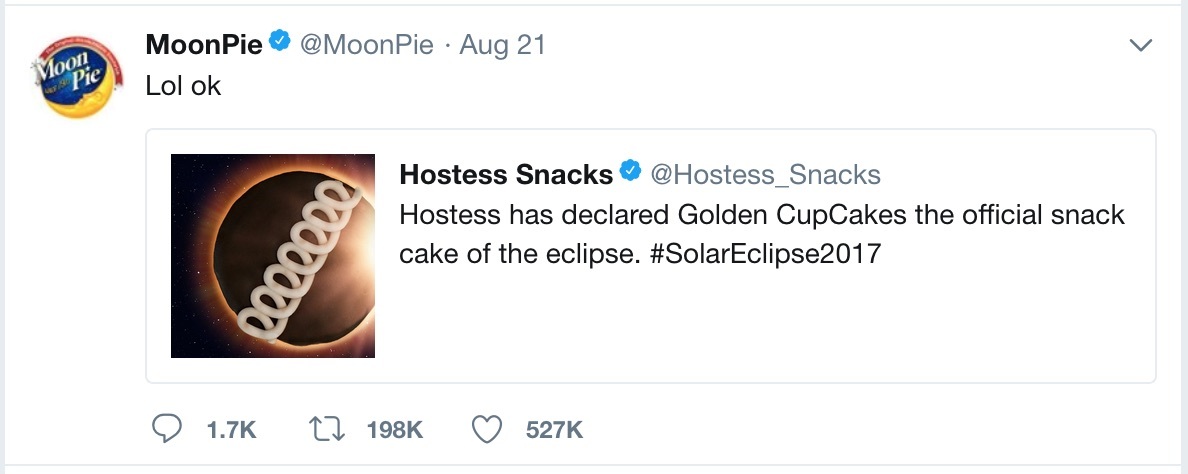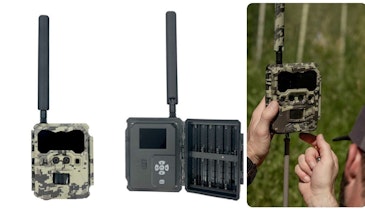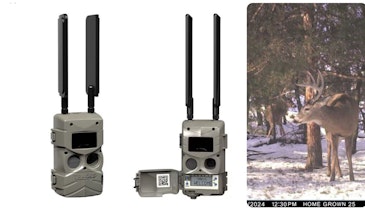Photo: John Hafner
Few companies have the people and time needed to really do multiple social media platforms the right way. And while just having a social media presence helps, in order for it to benefit your business, you need to have an active social media presence. That means posting regularly and having an understanding of what kinds of posts are most effective.
So instead of spreading yourself thin trying to manage several different platforms, it’s far more effective to focus on one or two. Here’s a look at five major social media platforms and what they can offer your business.
According to the Social Media Fact Sheet from the Pew Research Center, “Facebook is the most-widely used of the major social media platforms, and its user base is most broadly representative of the population as a whole.” As of January 10, 2018, 68 percent of U.S. adults used Facebook, and 74 percent of those with Facebook accounts use it daily.
The platform is popular among younger U.S. adults (ages 18-29 and 30-49, with 81 and 78 percent of those demographics using Facebook), but 65 percent of those aged 50-64 use Facebook and 41 percent of those over 65 use it. Those statistics may be a bit misleading, however, as young adults 18-24 seem to be leaving Facebook for Snapchat. It’s still an important platform with which to reach Boomers, Gen Xers and older Millennials, but if you’re looking to appeal to teens and young 20-somethings, you’ll need to consider adding another platform.
According to the Digital Marketing Institute, Facebook is a good platform for lead generation and building relationships. Facebook also offers a good deal of flexibility. You can use this platform to share text posts, photos and videos. That means you can post information on an upcoming sale, share a funny meme about how much you hate Mondays and add a video about how to properly use a back-tension release, all on one platform.
Facebook also offers tools, such as Facebook Audience Insights, that can help you learn more about your customers and potential customers so you can better tailor your marketing message to them. And while your company can use Facebook without spending a dime, you can (and given the changes Facebook is currently making to how often consumers see posts from business pages, probably should) spend a little money to promote your business, specifically targeting consumers based on certain characteristics.
Facebook does have some drawbacks. The first is the amount of competition on the site — there are a lot of companies with deeper pockets than you (ahem, Amazon) trying to reach consumers. That means you need to really understand what works and what doesn’t work to cut through the noise and get people to pay attention to your message.
Time is also a consideration. The constantly evolving Facebook algorithm, which determines who and how many people see your company’s posts, values engagement, so make sure you encourage engagement by responding to questions and comments your customers post on your page. Ask questions and start conversations. It’s not enough just to post once a day. You need to check in frequently and respond as needed.
Even considering all that, given its size and reach, Facebook is the social media platform you should be using if you only have time for one.
Twitter is primarily about text posts, and short ones at that — the company doubled the number of characters allowed in a post to 280 in November 2017, but the platform is still about brevity. Digital Marketing Institute describes Twitter as “the go-to platform if your business is about immediacy, and if you want to reach out to followers with breaking news, announcements, important messages and other in the moment information.”
Twitter’s reach is smaller than Facebook’s, with only 24 percent of U.S. adults using the platform. Less than half of those users (46 percent) use Twitter daily.
Sprout Social has a few recommendations for using Twitter to market your business. These include starting a good-natured Twitter feud with a competitor, a tactic that worked out well for MoonPie during the solar eclipse thanks to one perfect tweet.

While Twitter is mainly a text-based platform, you can also use it to post videos. Like text posts, videos are limited to very brief clips, so you’re not going to be using this platform to post in-depth how-to videos. Instead, you can post a quick look at a new product or a quick announcement about a sale or special — the key word is “quick.”
So, what should you know if you want to use Twitter for your business? Practical Commerce stresses content before sales, which means you need to provide your followers with valuable content before doing much self-promotion. Consider retweeting engaging tweets from experts, influencers or other companies. You can also ask questions to start a conversation with your followers.
Because of its focus on up-to-the-minute information, Twitter is best used for real-time engagement. That means you should plan to tweet during the day when most Twitter users are active, and ideally you should be available to respond to comments and questions within a fairly short timeframe.
Hashtags are an important part of Twitter, so if you decide to use this platform you’ll need to understand how to effectively use them. Twitter uses hashtags to categorize content, allowing users to more easily search through the roughly 500 million tweets posted every day.
Obviously, you can use very broad hashtags like #archery and #bowhunting in your tweets. You can also find trending hashtags on the Twitter website that might help get more eyes on your tweets. There are also third-party applications that can help you delve deeper into popular hashtags that might be more applicable to your business.
Don’t forget those fun, trivial holidays that can make for some fun posts. For example, June 1 is National Donut Day. Order a dozen donuts iced to look like archery targets, take a photo and post it on Twitter with the hashtag #NationalDonutDay. (Then please ship the donuts to me. Thank you.) April 5 is Read a Road Map Day, so you could post a photo of a map showing your dream hunting road trip and tag it #ReadaRoadMapDay. To encourage engagement, ask your Twitter followers when their dream hunting road trip is. With a little creativity, you could probably come up with cool archery- and bowhunting-related ideas for pretty much any holiday.
Posts with hashtags generally get more engagement, although be careful not to overdo it — posts with more than two hashtags actually see a drop in engagement.
Do I think Twitter can be valuable for small businesses? Absolutely. Would it be my first choice for social media platform if I were an archery retailer? Probably not. Most of the content you post on Twitter could be easily shared on other platforms, and the emphasis on immediacy makes it a platform that doesn’t lend itself to very limited management.
That said, the value of Twitter rests in its users. Are your customers on Twitter? If your local customer base uses the platform heavily, or if you’re able to develop an effective Twitter strategy, you should absolutely take advantage of this platform.
Instagram is a growing social media platform in which users share photos and videos. Thirty-five percent of U.S. adults use the platform, with those numbers skewing young — 64 percent of U.S. adults aged 18-29 use Instagram, while only 21 percent of those aged 50-64 do. Sixty percent of those users check Instagram daily.
Instagram is fairly easy to use — just as long as you know how to take good photos. You don’t have to be a professional photographer to use Instagram, and the platform offers a number of filters that can go a long way to making lackluster photos pop. But if you’re going to do well on Instagram, you should probably spend a little time learning how to take decent photos.
Like Twitter, Instagram uses hashtags to sort posts. Unlike on Twitter, however, Instagram posts should have more hashtags — the optimal number of hashtags for engagement on Instagram is between nine and 12. Longer hashtags also seem to do better on Instagram.
Instagram is an aspirational platform, which means that users tend to post photos that highlight the best parts of their lives. (Or, as this post puts it, “a representation of a way of life that is relatable, but better.”) You want to post photos of what participation in archery can look like. (If you need some inspiration, consider the consumer response to movies like The Hunger Games and Brave. Why did young people, particularly young women, become interested in archery after seeing those movies? It wasn’t because they suddenly realized how fun archery can be. It was because those movies portrayed strong, independent, powerful young women shooting a bow, and millions of young women associated archery with that strength and independence.)
The best posts on Instagram tell a story. DIY Genius has some great ideas for how to go about doing this, including posting interesting historical photos, giving followers a glimpse of “behind-the-scenes” moments, photographing a cohesive collection of objects, soliciting user-generated photos, showing products you sell in the field and putting up #TBT (Throwback Thursday) photos.
Posting #TBT photos and candid photos of employees being themselves can be a great way to make your shop more relatable to customers, which helps make your customers feel like they have a real relationship with you. You can share photos of your employees enjoying hobbies or activities outside work, as well. Throwback Thursday has the added advantage of letting you tap into nostalgia, as Hootsuite points out, by posting old photos of your business, employees, customers, archery equipment or advertisements from years ago.
Instagram also allows you to post Stories, which is a feature similar to Snapchat. This is a string of photos or videos that disappear after 24 hours. What should you post? Well, you could use Instagram Stories to promote a sale on a specific product. Later recommends using Instagram Stories to post photos of a single product from multiple angles, with the final photo in the series announcing a short-term discount on that product. An article from American Express suggests posting video Stories and treating them like a very short weekly TV spot with a recurring theme.
Because of its popularity among younger consumers and because it’s so easy to use, Instagram is a good choice for small businesses looking to add a second social media platform.
Pinterest is an online bulletin board where users can “pin” images from the web, saving them to one central location. Users create “boards,” or categories, with which to organize their pins. Popular Pinterest pins include recipes, home décor ideas, fashion and makeup tips, and crafts.
Forty-one percent of U.S. adult women use Pinterest, with 34 percent of those aged 18-29, 34 percent of those aged 30-49 and 26 percent of those aged 50-64 using the platform. This makes Pinterest a great way to reach women of all ages.
Pinterest is an important platform for businesses to consider using because people use Pinterest differently than other social media platforms. While consumers certainly will follow brands, companies and influencers on other social media platforms, they generally aren’t using those platforms to shop. When I’m on Facebook, I’m there to see photos of my nieces and nephews, not to buy a new pair of boots.
Pinterest is different. According to Hootsuite, more than two-thirds of Pinterest users say they’ve discovered a brand through the platform. And — you’ll like this — 93 percent say they use Pinterest to plan purchases. That means content you push out on Pinterest is reaching a purchase-minded audience.
To use Pinterest, simply set up a Pinterest business account and start pinning. If you want Pinterest users to be able to pin content from your website, make sure you include a Pinterest button on your content so that anyone can save it to their Pinterest boards.
Pinterest is, like Instagram, very visual, so make sure you use quality photos. According to Kissmetrics, you want to use crisp, high-resolution photos; opt for light photos as opposed to dark (lighter images get more repins than dark ones); and, when possible, stay away from faces (photos without faces are repinned more). The ideal size for a Pinterest photo is 736x1102 pixels.
Infographics are a great way to share information in the image itself, which makes it easy for users to see the value of your pin right away. Venngage offers six tips for producing great infographics, which include choosing a popular topic, offering funny or useful content, and aiming for infographics that are substantially longer than they are wide. Some of the infographics that have caught my eye on Pinterest cover archery-friendly workouts and basic information on shooting form or archery equipment. If you’re interested in playing into popular topics, consider infographics on hunting-related food and travel.
There are a number of tools that will allow you to create your own infographics, which you can use not only on Pinterest, but on other social media platforms as well. (I haven’t done much in terms of making my own infographics, but I’ve found that Canva is a fairly easy site on which to manipulate images.)
I think Pinterest is an underutilized social media platform that can really help businesses reach consumers, particularly women. Given the fact that people use the platform to plan purchases, it might even be the second social media platform I would choose after Facebook. I do think, however, that producing pinnable content can take time that small retailers may not have. I also think that, as valuable as Pinterest is, it may make more sense for manufacturers and chain retailers than retailers with a single location.
That said, I did find an article from Small Biz Trends that suggested small retailers use Pinterest to track trends and consumer interest. By keeping an eye on what consumers are pinning, you can get an idea for what products you should stock in your shop. That is a really smart way to use Pinterest that’s much less labor-intensive. You may find other ways to use the platform that benefit your business.
Snapchat
Of the five social media platforms covered here, Snapchat is the one I would recommend least for archery retailers. I’m including it, however, because it’s growing so quickly that I think it will be hard to ignore in the future. This is the social media platform young consumers are flocking to, and if you want to reach them, this may soon be the way to do it.
Only 27 percent of U.S. adults use Snapchat, but 68 percent of people aged 18-29 do. Snapchat now has 187 million daily users sending photos and videos to other users. Unlike other platforms, where posts and content are saved until the user deletes them, Snapchat posts disappear 10 seconds after being viewed. Although it started as a messaging app, Snapchat later introduced Snapchat Stories, which function more like a newsfeed and are available for friends to view. Like Instagram Stories, Snapchat Stories disappear after 24 hours.
Snapchat does sell advertising, and several large brands have used it effectively. Starbucks, for example, has introduced several filters (including one for the unicorn frappuccino) that let Snapchat users turn photos into what basically amounts to Starbucks ads. Meanwhile, Taco Bell created a Snapchat lens in which people’s heads turned into tacos. That ad was viewed 224 million times, with users playing with the lens for an average of 24 seconds.
But you’re not Starbucks or Taco Bell, and you probably don’t have their advertising budget. That doesn’t mean you can’t use Snapchat, however. You can still use Snapchat to produce Snapchat Stories to share with your followers. One great idea from Hootsuite is to offer deals and promotions on Snapchat. Because your Snapchat Stories expire after 24 hours, your customers need to actively follow your company so they don’t miss out on these fleeting promotions.
Your business probably doesn’t need to be on Snapchat at the moment. I would recommend, however, that you at least establish a personal Snapchat account so you can learn the ins and outs of the platform now. If Snapchat turns out to be the next big thing, you’ll already be familiar with how it works.
OK … now what?
Most archery retailers will be best served by using Facebook and possibly one other platform. And while you can choose that second platform based on the audience you’re trying to reach, you also need to ask yourself what platform appeals most to you. Do you take a lot of photos? Maybe Instagram is your jam. Do you enjoy engaging other people on the latest news and developments? Twitter may be your thing.
Understanding that is important because the most effective social media platform for your business is the one you use consistently. If you like posting on it and will do so regularly, that platform is far more likely to help your business than one you post on only occasionally.
A major caveat
Recent events illustrate how quickly the social media landscape can shift. YouTube and Reddit just announced restrictions on gun-related content. How hard is it to imagine other platforms wading into the gun control debate? And is it really that much of a stretch to think that social media platforms could someday turn a gun ban into a ban on all weapons?
I’ve said this before, but I cannot stress this enough — no matter which social media platform you choose, drive traffic to your own website and use it to collect email addresses. You may never need those email addresses, but if your most effective social media platform one day kicks you off because you sell guns or bows or spears or what-have-you, you’ll be glad you have contact information for your followers. Remember — you don’t own your Facebook page or your Instagram feed or your Pinterest boards. Some huge company does. Collect email addresses.






